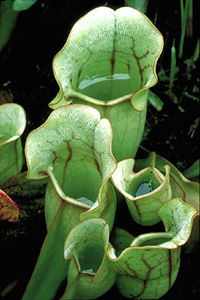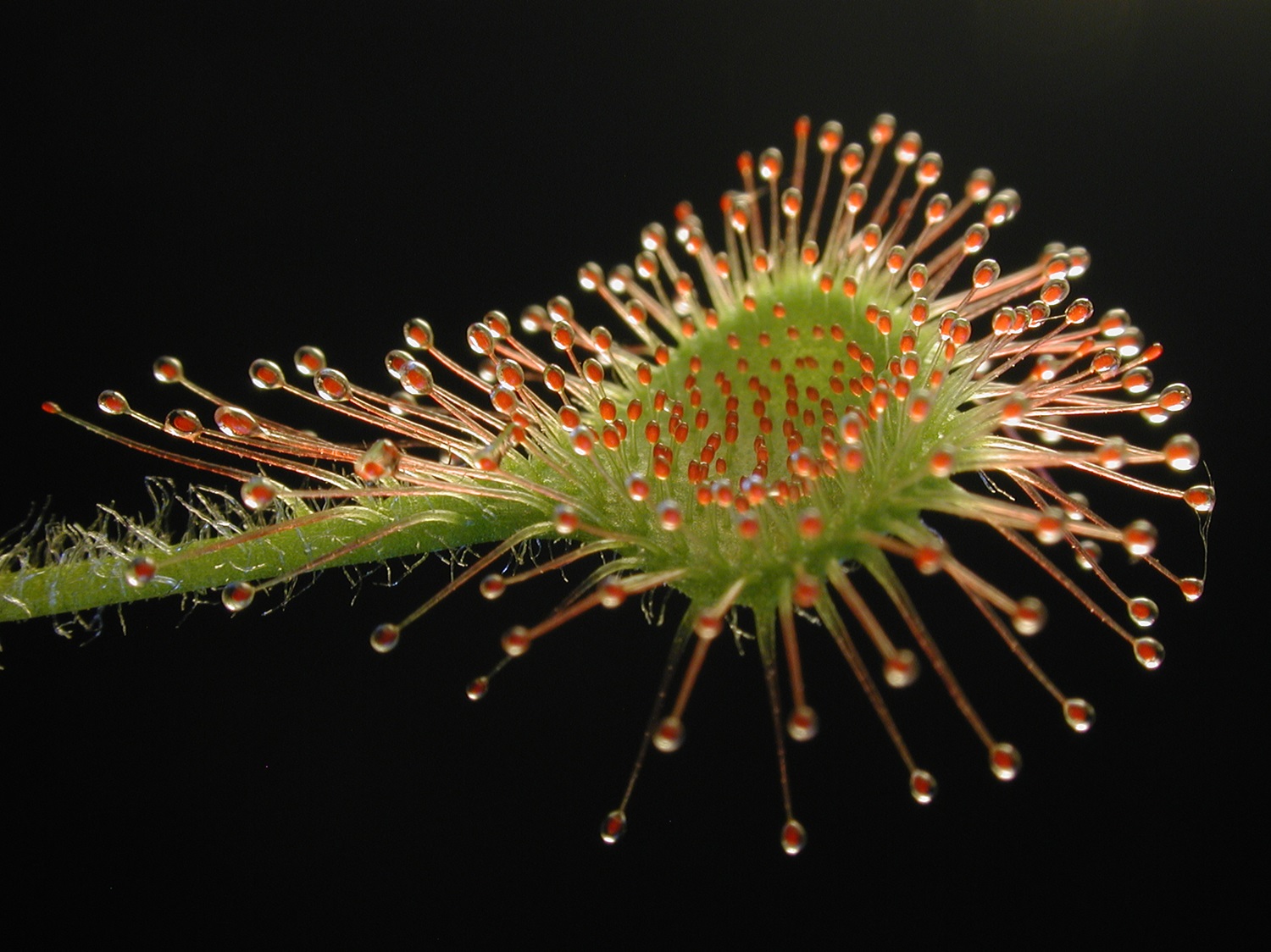Pitcher plant is the common name for certain perennial herbs adapted to wet, marshy and boggy habitats low in nutrients. They have rosettes of leaves that are modified into tubular, trumpet-like structures filled with liquid that function as insect traps. The plants generally bear a single, large nodding flower. Canada is home to only one species, the purple pitcher plant (Sarracenia purpurea).

Distribution
Tropical Asian and North Australian pitcher plants of the genus Nepenthes belong to the family Nepenthaceae. The Australian flycatcher (Cephalotus follicularis) of southwest Australia is the only species of the family Cephalotaceae. North and South American species, of which there are only about 17, belong to the family Sarraceniaceae. Most pitcher plant species in North America grow in the eastern United States. In Canada, only a single species of pitcher plant (Sarracenia purpurea) is found in boggy habitats from Newfoundland to northeastern British Columbia and parts of the Northwest Territories.
Purple Pitcher Plant
This native plant has green pitchers with conspicuous bright red to purplish veins and a single nodding purple flower, globular in form. Insects attracted to the rim of the brightly coloured leaves lose their footing on the slippery, waxy surface and slide down into the liquid-filled traps. Downward-pointed hairs prevent the insects from crawling out of the pitcher.
The insects drown in the liquid and decompose through the action of enzymes and microorganisms living in the fluid. The plant absorbs the nutrients released by the breakdown of both the insect bodies and the microorganisms. Interestingly, a few insects, such as a harmless mosquito of the genus Wyeomyla and a fly of the genus Sarcophaga, live part of their lives within the digestive fluids of the pitcher.
In 1954, Newfoundland adopted this plant as its provincial floral emblem. The genus Sarracenia was named after the French surgeon, physician, and naturalist Michel Sarrazin.
See also Carnivorous Plants.


 Share on Facebook
Share on Facebook Share on X
Share on X Share by Email
Share by Email Share on Google Classroom
Share on Google Classroom








